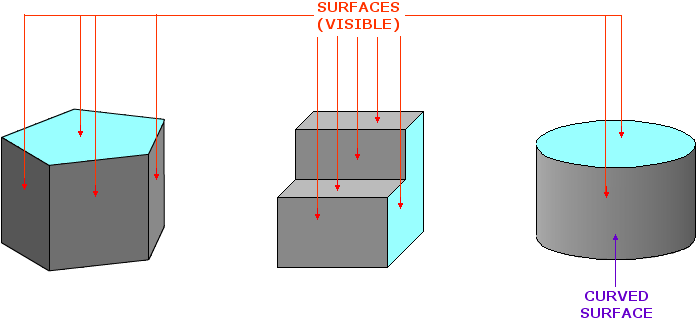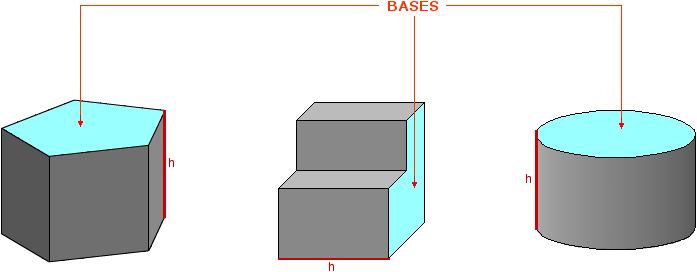The first two examples (below left) are made up entirely of flat surfaces.
The cylinder [third example (below right)] is made up of two flat surfaces and one curved surface.

A surface is a set of conected points defining a region in either two or three dimensions.
If the surface lies entirely in a plane, it is labelled as a "flat" surface.
If the surface does not lie entirely in a plane, it is labelled as a "curved" surface.
The first two examples (below left) are made up entirely of flat surfaces.
The cylinder [third example (below right)] is made up of two flat surfaces and one curved surface.

A flat surface can be labelled as a base when used to calculate the volume of a prism or pyramid.
The volume of each prism below (Vprism) can be found by multiplying the area of a base (Abase) with the height (h) of the prism.
Vprism = Abaseh

A flat surface can be labelled as a face when the region is defined by a polygon.

The lateral surface of the cylinder is curved, so it is not a face.
The base of the cylinder is a circle (not a polygon), so it is not a face.